On no longer being loved:
11 formal problems related to method
Eugenie Brinkema
1Tu ne m’aimes plus?
Non. Mais j’ai une infinie tendresse pour toi.[1]
Probably it was nothing all that loving, not much, and nothing now is missing. You are everywhere but the center but it is too late, or never again, and it is too late, too late, it is too late this time, it is late it is hard all has waned it is over, and in the end you were not enough.
To no more be the thing that is wanted: a levigation of heart. Infinite tenderness can mean affection without end or what is raw without balm. If the latter case, one is stained forever: invisibly inked a hematoma’s purple & black &
2Blau. cont. (Goethe)[2]
779. This colour has a peculiar and almost indescribable effect on the eye. As a hue it is powerful, but it is on the negative side, and in its highest purity is, as it were, a stimulating negation. Its appearance, then, is a kind of contradiction between excitement and repose.
[Reiz und Ruhe: stimulus, attraction, but also lure, also charm as of a woman, what luster is alive & peace, quiet, rest, repose, but also quiescent, inactive, also neutral, also dormancy as of inoperative love, deactivated, in other words broken and faulty, what is dull and/or (but mostly &) what is dead]
780. As the upper sky and distant mountains appear blue, so a blue surface seems to retire from us.
[zurückweichen: to back away, to pull away, to fall back, to give way, but also to shy away (shame away and shrink, so close to wither), the more violent to flinch, and to recede, retreat, weaken, withdraw—]
781. But as we readily follow an agreeable object that flies from us, so we love to contemplate blue, not because it advances to us, but because it draws us after it.
[And in so wandering off, in being what departs, blue is no longer the lure but the recoiling that distances as its lure; we haul after withdrawal, not withdrawing thing, dragged after and not yet closer, perpetual retreat, all leaving and still not close; every time Zeno’s Achilles, each time the pathetic weepy runner.]
3Everything henceforth will be a question of negative space.
4It takes place in between its two titles: Blue is the Warmest Color/La Vie d’Adèle—Chapitres 1&2 (Abdellatif Kechiche, 2013) has been characterized if not caricatured as a love story, a first love story, a coming out story, a best fuck of your life—& it will never be that good again—or a feminist / resolutely anti-feminist / queer / redemptively heteronormative / male-gaze-displaying / female-desire-demonstrating narrative so often that it bears pausing and pointing out the very obvious, very simple fact that the film is, at heart, in truth about depletion—about the retreat of a world-positing-world-destroying love, what wrecking bruising toll is taken by a draining away of affect, by love’s bleed, passion’s absenting and its vicious whimpered end.
The work attests to the sensation of no longer being loved.
(4a) In the logic of the chromatic affectivity of the English title, the film is structured by a cooling. (4b) Or, so go the chapters of the French: a succession of plenitude and radical lack, partible divisions that cancel each other out; one gains freedom at the other’s direct loss: zero-sum. (4c) Or, in the language of Goethe, the film’s form is a stimulating negation.
(4d) Thus what we are speaking of is not purely a negation but a negation that forms a positive difference, posing: What is the affective specificity of the losing of a directed affect? What is the specific tonality of this no-longer? It has nothing in common with the bittersweet feeling of no longer loving. To no longer be loved is not like to no longer love nor like to no longer be disgusted, to no longer grieve, no longer hold in contempt, to have unmoored hot shame or no longer inspire a recrudescent fear; nor is it a static anhedonia, nor or or—No; it is merely the changing pressure of a unified system: the intensification into a new state at another figure’s waning of affect.
One is, strictly speaking, dislocated from the form of love: a joining of mutually affecting forces.
(4e) Stendhal defines it thus: “To love is to enjoy seeing, touching, and sensing with all the senses, as closely as possible, a lovable object which loves in return.”[3] One wonders then: what is the temporal order of undoing love at the breaking of that which? A love no longer returning forms a spacing: devastates the as closely as possible, interpolates an interval.
(4f) Suppose you love. What happens next is either: nothing at all or you no longer love. For as long as you love, nothing new is happening and no event is next until something else intercedes. Love is surprise, the encounter is what by definition was what was not seen to be coming—but nothing is surprising in love itself until the sudden instant love is itself no longer.
(4f, cont.) Jean-Luc Nancy: “it is possible that one day I will no longer love you, and this possibility cannot be taken away from love—it belongs to it. It is against this possibility, but also with it, that the promise is made.”[4]
But I am speaking of this not as possibility but as necessity: when what belongs to love as its no-longer limit has arrived, absolutely and decisively.
5In the rush to adjudicate Blue/Adèle in the least interesting way possible—in relation to motifs of identity politics, generic debates about pornography, trite arguments over the verisimilitude of sexual practices (How stale these critical claims, ventriloquizing each other: can you not already imagine fully how they go?)—and in thrall to readings that co-opt every text for a flattening and naïve demonstrationism of prior, stable categories of cultural knowledge—Kechiche’s film has been treated to paraphrase and evaluation not only divested from a consideration of form and structure but resolutely indifferent to the specific insights that a radical formalism might generate in relation to affective intensities.[5] As a result, affectivity has been taken for a positive nomination instead of a structuring repudiation (love in place of its withdrawal), aesthetic elections have been (mis)taken for themes (extreme close-ups as avowals of intimacy), or they have been instrumentalized for a simplistic model of spectatorial reception (extreme close-ups as generators of intimacy), and largely unremarked is the rigorous composition of the text on the level of light, color, line, figure, ground, and the mode by which the internal divisions of the film are governed by a series of dialogues with intertextual figures.[6]
Those include—& this is not exhaustive—Marivaux’s La Vie de Marianne, ou Les Aventures de Madame La Comtesse de …; Jean Anouilh’s Antigone, and more precisely Antigone’s refusal (“c’est le jour où elle dit non, et c’est le jour où elle va mourir” [“The day she says no is the day she will die”] offers a teacher as the essential form of tragedy); Sartre’s Les Mains sales and “L’existentialisme est un humanisme”; Francis Ponge’s surrealist poetry of things, Le parti pris des choses; HK’s Leftist protest anthem, “On lâche rien”; Pabst’s Pandora’s Box; the films of Kubrick (—the great painterly colorist of the cinema); Julie Maroh’s title-loaning source-text graphic novel, which further suggests one might consult the history of color temperature in eighteenth-century Aesthetics or, why not, the relation of warmth and coolness to animation more broadly, dating at least as far back as the Middle Ages; Gaspar Noé’s Enter the Void and its central pact to never ever, ever ever leave each other; the Gustav Klimt-versus-Egon Schiele debate; Beaux Arts magazine; the Western discourse of Artists and their Muses; Neoclassical sculpture; Courbet’s L’Origine du monde; Picasso (—of the famed Blue Period); sentimental literature and its polyphonic tears of love; the Ugly as excluded from the Fine Arts; the children’s book Le Loup est revenu; the nursery rhyme “Lundi tout gris”; Alain Bosquet’s poem “La Trompe de l’éléphant” [Pas besoin]—and we have only lingered with the first two chapters.[7]
(5a) The literary intertexts constitute structuring breaks at regular intervals, passages read aloud functioning as epigraphical cleaves in the rigorously partitioned work. This is a quick sketch (—we really ought to diagram it): The first half of the three-hour film is governed by three large sections, each of which is inaugurated by a recitation in Adèle’s high school classroom (with a visual logic of figures isolated from a blue ground; more on that infra): (i) Marivaux and a discussion of glance, encounter, love and regret, then a scene of eating, a boy, first exchanging glances with Emma in the street (in other words: being taken off guard by a shock of blue), ungood sex with the boy, the break up, a protest march; &c. (ii) Anouilh and a discussion of refusal, tragedy, childhood, death, then a kiss at school, encountering Emma at a bar at night (introducing a second free-floating haunt of blue), schoolyard cruelty, sketching and sweetness in the park; &c. (iii) Ponge and the question of the natural, perversion, inevitable vice, then a museum, eating in the park, the rigorously composed ecstasies of Adèle and Emma’s first fuck (forming a first internal symmetry with the first segment, repetition with a series of differences: spontaneity supplanting the rote, girl supplanting boy, lust supplanting convention (and also a series of formal differences: the light is otherwise, the angles are new)), another protest, this time for gay pride (forming a second internal symmetry with the first segment), dinner with each set of parents, a birthday party, more sex (whose duration, intensity, and fleshy explicitness is required: one has to know what precisely our heroine will be losing, will have lost). At 100 minutes in, a hard cut signals a temporal leap by the loss of blue—Emma’s hair is suddenly an ashy blond—and the first three acts are over.
The second chapter, as it were, is also structured by epigraphic readings of three texts aloud, this time in inversions in which Adèle is teacher, no longer student (forming another set of symmetries with the first half), exchanging schoolyards and patterning itself after the first chapter in order to rotate or negate key elements (e.g., Adèle no longer eats her father’s pasta, she makes the pasta to serve to Emma’s friends; the aesthetic objects on display no longer appear in the museum but are Emma’s works, in the home; and, crucially, sex is what does not happen as it did [Sex: what never happens again quite as it did], as Emma’s cool spurning of Adèle’s attempts at seduction supplant the infinite yes of the first half). The second chapter symmetrically moves outwards, quoting and citing the constituent elements of the first chapter in order to effect this one-to-one negation, moving back towards the opening of the film: Adèle fucks a man, then she is alone again, undone as she was at the start. There is no love; there is love; there is not-love. Everything is given form in order to come apart. & so on.
(5b) And, of course, other logics and structures—other diagrams—might be drawn: consider the temporal relations between the ferocious intensity of the first time the two women fuck each other (seven minutes), the ferocious intensity of the fight that cleaves the two (seven minutes), and the brutal declaration at a dark café towards the end of the film that the one still loves while the other does not (fourteen minutes from encounter to end as though summing the difference between the first and second seven-minute sequences). From Aristophanes on, the metaphysics of love has been cast as numerical—he gives the longing for wholeness in the encounter with love as the hen ek duoin, the one-out-of-two. Redescribe the film’s temporal math as Fucking, 1+1=1; Cleaving, 2-1=1, 1; No longer sharing love in common, 1+0=∅—and in doing so, has one rearrived at the affective purity of no longer being loved? One’s world reduced to null set in the Tu ne m’aimes plus? At the confirmation of the withdrawal—Non—one now has precisely nothing.
(5c) All this and we have not yet begun to treat blue. When Emma’s new lover says to a supplanted Adèle at the final gallery show that the former lover is “still here” and points to a sketch of Adèle on the gallery wall—drawn nude stained with blue splatter—it begs the question: what does it mean to be there as figure in line; or, its variation: what does it mean to be present as a shock of color, the form of the very first encounter with Emma, the smoky blue of her hair not signing meaning but constituting in its sudden appearance the essential dimension of the contingency of love? The mise-en-scene is saturated with blues—and too many of them: Kleinian, navy, cyans, near-blacks, violet grays and white-tinged pales; it is paired with, alongside or cut through, blue’s color-wheel negations of golds and burnished yellows; it appears as a rupture of the new, sudden in the frame, or it rises or retreats, attaches to fabrics or takes on the status of a Figure or bleeds beyond the screen as extensive infinitizing ground.
Or it does a dozen other things (undiscovered: most apparent to the eye as presence, color still requires a reading).
(5d) In Maroh’s graphic novel that loans its English title to the film—a very different text, not just medially but in sentimental arrangement, one that turns affectively on mourning and melodramas of love realized too late—blue is figured as a sign of transition between the present and past, between inner and outer textual frames. Color intercedes line, breaking up space and inaugurating a temporal break in worlds. (Color: a pure form of visible difference.)
(5c, cont.) The film impossibilizes a neutrality towards blue. It risks being overtaken by a color (i.e., risks being overtaken by a formal detail).
(5e) The opening shot of the film: a dusky blue mailbox in the middle ground, blue signing the crystallization of passage, site of what is sent out, what is received, where things and messages fundamentally cross. Adèle walks towards the camera, away from its rectangular form.
(5f) The final shot of the film: the vibrant flare of Adèle’s sapphire dress in agonized departure—from Emma, from her new lover—walks that dress and its hourglass of blue down a street, bearing its saturation as movement that departs, that withdraws as she walks away from the camera, unable to move quickly enough to leave blue behind.
(5c, cont.) How does a reading of blue as compositional element relate to affective appearance and waning, to temporalities of suddenness and elongated duration, to scales of magnification and intimacies of proximity and details in miniature or estrangement and spacing? Blue does formal work. Blue also does affective work—or, rather, it might—but one cannot know what that is in advance of reading, so once more: What unremittable formal work does blue do here?
(5c, cont.) One can retreat from blue in many ways:
—“A nude woman, ugly, spread out on opaque blue grass under some palm trees.” [Louis Vauxcelles, Gil Blas, 1907, on Matisse’s Nu bleu, Souvenir de Biskra]
—“If I met such a woman in the street, I should run away in terror. Above all I do not create a woman, I make a picture.” [Matisse][8]
(5g) How else might one read for formal affectivity? These bodies proximate and they space: this is what all the fucking is about. It is ineluctably graphic—not as in explicit or obscene but as in drawing, as in given in schema and line. Any reading of the extended (in duration) and extensive (in space) stagings of Adèle and Emma’s bodies entwined must not speak in indifference to and ignorant of the specific forms they take—careful not to write over the limbs and tongues and curves and planes as formed, as compositionally complex; be sure to consider skin as color and light, fingers and calves as angles and border. Above all, remain wary of a generic topology that evaluates the tiresome field of the sexually arousing (whereby one generic test succeeds (or the aesthetically arousing, whereby its generic test fails)). For in this film it is impossible to get around: Sex is not a thing, but pace Lauren Berlant nor is it a relation; sex, rather, is a form of sculpture, a way bodies take up and use space, a question of ornament, line, color, figure, ground, expansion, cry, weight, collapse. The two women suck and stir and writhe and grasp—but the question is: what geometric shapes are thereby privileged? To write about love and sex without recourse to reading attentively the form of the film is to designate no critical claim here, for in this work love and sex are designated in form. Once more, then: Where is the composition heavy and light, balanced or unbalanced; how are the figures locked within rigid hierarchical grids: vertical, then horizontal ones? How does the schema of the interlocking bodies relate to fore-, middle- and background, and where do they concentrate lines, blending distinct figures into a composite or fluid one? And how are these figures given in relation to the bare stage of horizontal blocks of white and blue, devoid of ornament, flattened and flattening? Two women are fucking—but that does not mean we are done with reading.
To the contrary: Sex is a meeting ground of forms, of which bodies are but by no means are the only ones.
Two bodies’ intimacy, after all, is the compositional dimension by which, for a brief time, they share one interior line.
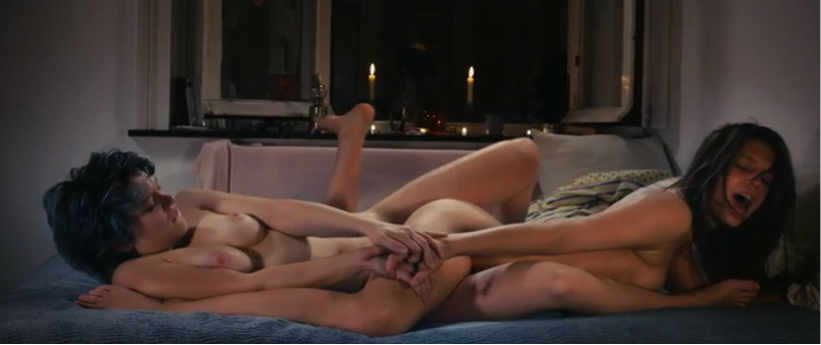
Figure 1: Abdellatif Kechiche, Blue is the Warmest Color, 1:31:13
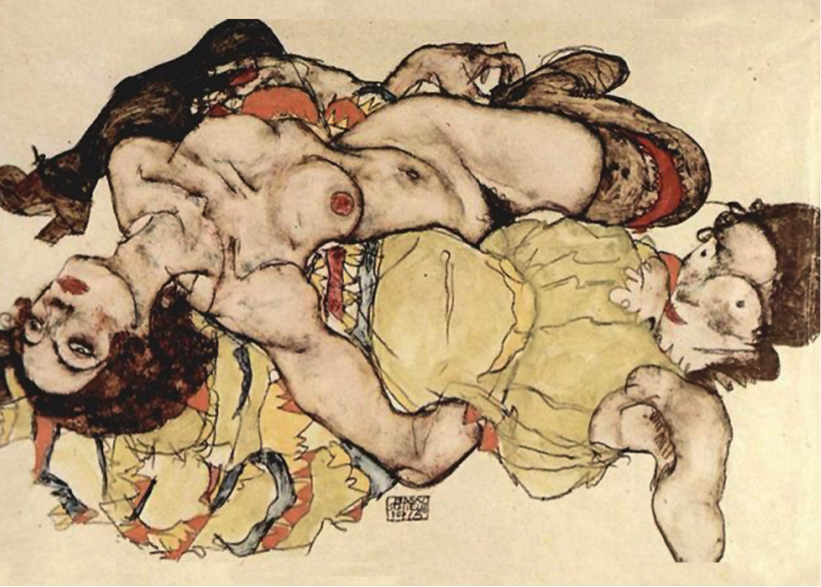
Figure 2: Egon Schiele, Zwei Mädchen, in verschränkter Stellung liegend (1915)
(5h) n.b. in each spare, flat tableau above the erring single foot, what extends its awkwardness to the left at an angled remove precisely to loan weight and density to the block of the entangled from which its vector flees.
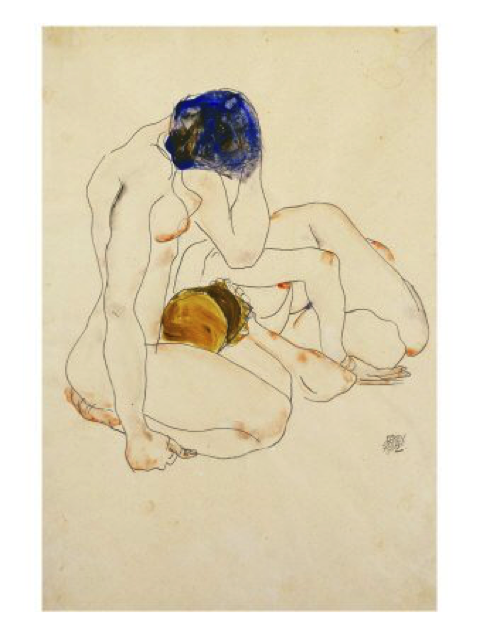
Figure 3: Egon Schiele, Zwei Freundinnen (1912)
(5i) Corpus can be color. Each time Adèle and Emma’s bodies cross, the paired tones of blue and gold are thrown to the margins of the image as though a condensation and ninety-degree rotation of Schiele’s two 1912 friends, their figures unfixed in space, all axis and intersection, difference as gouache (also, of course, known as bodycolor).
(5i, alt.) Bodies are fundamentally shapes. Each time Adèle and Emma’s bodies right-angle form, the paired blue-gold coronas mirror-reflect and reorder the vertical hierarchy of Schiele’s amative ovals:
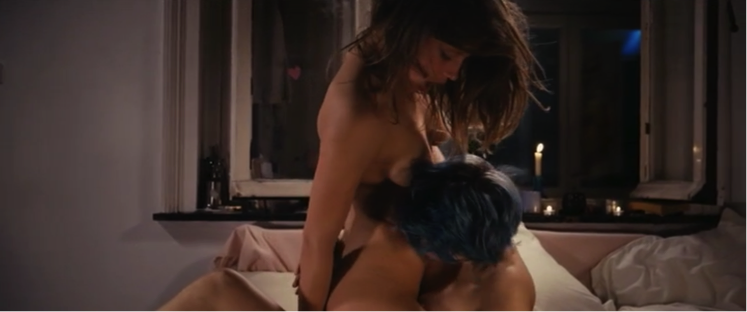
Figure 4: Abdellatif Kechiche, Blue is the Warmest Color, 1:16:56
(5i, cont.) n.b. this carefully composed cinematic tableau, with its uneven distribution of blanknesses: whitewall background fields interrupted by the dark excision of a rectangle; the artifice of candles (inadequate to the light cast on the two figures in the space: they precisely do not lend to the bodies the seductions of glow, the mysteries of shadow); the open window gesturing at a beyond to the flat representational space, & the glint of blue just beyond its reach; the timelessness and abstraction of the setting; the white drapery of classical sculpture (cf. curtains cloaking nudes) thrown to the bed cum stage; &c.
6To be clear about method: This is not (yet) a reading. It remains only an insistence that any critical claim to make about the film and its relation to affect would do well to linger with the complex details of the epigraphic structure, the forms of symmetry and dissymmetry between the parts of the film—to give formal body to its series of repetitions and their differences. To ask: What is color, line, duration, repetition, the graphic, the epigraphic, the sketch, the sudden, the partible, movements towards and away; what is figure, ground, line, and full and empty space? How does the text itself establish an opposition between feeling and understanding (look, perhaps, to the Bosquet); between sculpture and drawn sketch; between the Ugly and the Beautiful? What is the inalterably specific form of the loss of love? How is the affective specificity of no longer being loved a formal problem, and how does reading for form illuminate the dimensions of this loss? No reading for affective form would take the measure of all of these dimensions, but a robust account of affect must read for some of these dimensions of what the text is, beyond summations or paraphrase.
Blue/Adèle is a particularly urgent ground for resisting the false notion of form at first sight, turning as it does on intensities of sentiment, intensities of color, each apparently manifest as presence, their conjunction a fundamental test of the problem of the relation of form to affect at its most acute stage: when it is disappearing, when it is nearly not there at all. In considering the agon and agony of no longer being loved, we require a reading that takes the measure of blue, of line, of space, shape, texture, brilliance, duration, gesture. Otherwise one risks never being taken by surprise by the particularity of this film, this text precisely about the world-positing-world-destroying disorientation of being taken surprise by love.
Otherwise: what it is to no longer be loved will never rise to the level of a specificity.
—And just ask around: everything painful is a specificity.
7Brinkema, op. cit.: “one loses control of reading; that is its infinite promise.”[9]
8“La vie de Marianne is not so much a novel about the body as a novel about the effects of the body on those who are confronted with it. The color of Marianne’s eyes is of no import to the internal coherence of the novel, but the effects they have on others is of fundamental import to the narrative. The various responses to Marianne’s appearance provide the framework for the narrative, ranging from lust (M. de Climal) to infatuation (Valville) to sympathy (Mme. de Miran), and it is therefore these responses Marivaux emphasizes.”[10]
—But what happens when the effect on the body of those confronted is to retreat from effect, to declare that, faced with these specific eyes and tears and lips and skin: you are the thing that no longer affects me? There is no more in you to still prompt love.
9In organizing itself around the dimension of affective separation—the distancing and no-longerness of love, inseparably in a relation to the positive element that is withdrawn—such that they, as it were, mutually sketch each other—the film is formally obsessed with figure/ground relations, put into the film in an aesthetic shorthand: a fifty-second scene in which Emma and a doctoral student of art history and philosophy establish a set of oppositions in a disagreement about Egon Schiele and Gustav Klimt: the former marked by unlikely positions, body as gesture, what is twisted, obscure, dark, morbid, as opposed to the decorative, florid, and ornamental. This is a well-worn aesthetic structure (the familiarity is the point: it constitutes a signature of obviousness, what is uneffaced as overly evident—in chromatic terms, its contrast is oversaturated), one that opposes formally ordered, meticulous, patterned surfaces and brilliant palettes to brutal, awkward, figural distortions, what is indecorous instead of decorative, strangely angled instead of geometrically patterned, what is defiant to norms of beauty, even ugly, as an intrusion on the aesthetic. Another way of naming the opposition between Klimt and Schiele is between formalism (cold, all surface, all geometry) and affective intensity (what distends figure, what gestures wrack and wreck the body). (As just one example of that shorthand: “A metamorphosis was thus completed: by substituting emotional affect for decorative effect in the interplay of color and form, Schiele had unmasked the sensual, sinister world that had always been buried beneath Klimt’s seductive surfaces.”[11]) This is the very opposition that sustains any affect theory that opposes affectivity to form, structure, textual detail—another version of the antonymic relation of the decorative against the expressive, line against emotive power of line, affect as what rescues an aloof, detached formalism… In this tradition, affect is always (taken to be) the warmest color.
(9a) The aesthetic micro-allegory crystallized in the worn Schiele/Klimt opposition is thus a metacommentary on the very way in which one might read affect in relation to form in the film. Consider, then, how it hinges on the word floride, what Klimt is accused of, Schiele opposed to.
Florid is a fighting word: what is excessively beautiful, what is gilded, overwrought, too decorated, excessively ornate, & is also what feels too much—a florid sensibility, what is fervid—& is also reddish, ruddy, rosy: in other words, too red; all that is not blue. What flourishes (floridus: in bloom, in other words: alive, living) is opposed to morbidity (what withers, is diseased, is dead)—so of a petal, a body, a sentiment.
10As the film turns on an affective withdrawal, negative space becomes the privileged compositional site for the affirmative staging of retreat, nowhere more strikingly than in the crystallization of a unique configuration of love: the kiss.
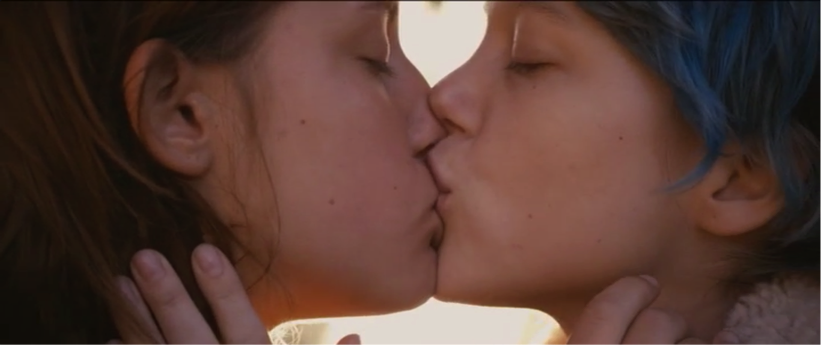
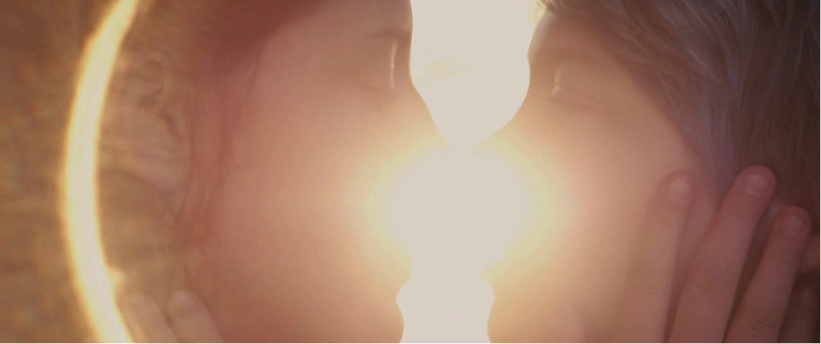
Figures 5 and 6: Abdellatif Kechiche, Blue is the Warmest Color, 1:24:39-1:25:00
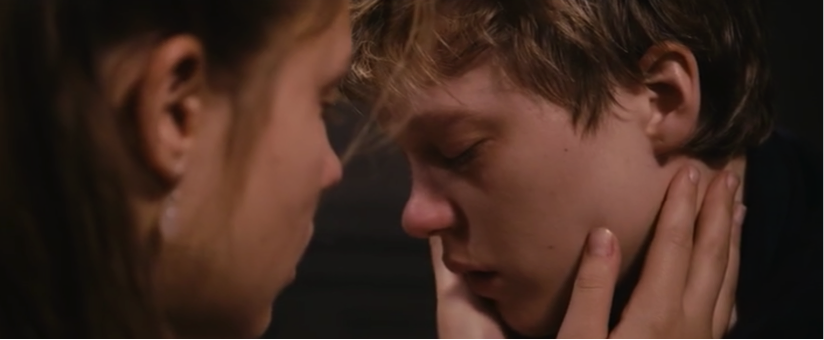
Figure 7, Abdellatif Kechiche, Blue is the Warmest Color, 2:41:28
In lieu of a negative space that surrounds and demarcates a joined form, here the composition involves the establishment of an illuminated space between the faces that is posited, withheld, constructed, then demolished in pulsations on the rhythmic capitulations of the lips (Figures 5 & 6). Compared to the lovers’ final encounter (not last, for there will be others, but the encounter marked by its avowal of a finality of love (Figure 7)), in which the black imposition between Adèle and Emma as figures cleaves their relation both to each other and to ground, where darkness gives the sharpest possible line of separation, the chromatic oppositional logic of the kiss demonstrates the give of illumination, of lightness as a form of conjunction. Light is not constant here, however; the pulsing of the sun flare establishes a relation between line and what overtakes line: This image poses the question of how to posit a withdrawal, not an arbitrary consideration in a study of no longer being loved. Light is what cleaves, but thereby activates negative space; kiss is what unifies but thereby works over edge. The distinctness of each singular face is obliterated not by a shared interior line as in Schiele’s pairings of friends and lovers but by an overwhelming luminosity. The sun flare attests to the intrusion of negative space as violent; it erases the boundary between the figures and simultaneously erases the hard line of demarcation between figures and ground. So the showing of illumination in the kiss effects a double obliteration: a devastation of any shared line of the two forms and an obliteration of the distinction of figures from ground.
The spacing that is the measure of love—an intimate crossing that can always withdraw again—is there, affirmed in form, as a spacing offered in order to be ravaged. (This is what one gives above all in love: the condition of possibility for a laying waste.) The negative space posited then erased gives shape to what is unrendered: it establishes the distance crossed in love, demonstrates the dissolubility of structure itself. Light here gives the openness of the formal shape of love, depassifying negative space, animating withdrawal as the positive intensity of what is most vibrant in its retreat. (Once again, we are with the formulation given by Goethe: this is the realm of a stimulating negation.)
(10a) cf. the sun flare that surrounds Adèle alone, two and a half hours into the film, after the end of love, as she floats in a field of blue: here, the flaring of light devastates the cleaving of figure from ground as a matter of outlined form, a matter of the one all alone, and not of the two.
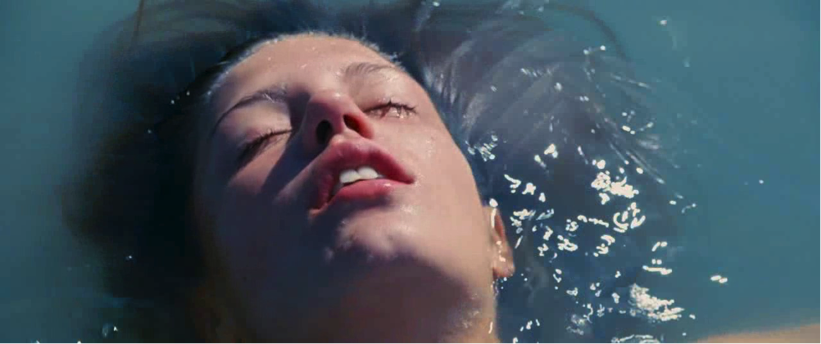
Figure 8: Abdellatif Kechiche, Blue is the Warmest Color, 2:26:56
(10a, cont.) Color is thereby commuted from potentiality in the world (what is encountered as the new) to the givenness of compositional ground for what remains.
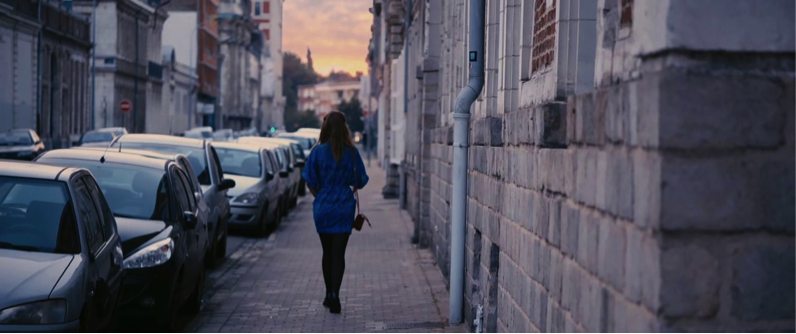
Figure 9, Abdellatif Kechiche, Blue is the Warmest Color, 2:56:37
(10b) Put another way: The chromatic development of the film traces an excentricity of blue as it becomes a concentricity of blue. What moves towards Adèle (crossing the street; erupting behind her in the bar; the appearance of color as shock: of the new, of vitality, of passion) is carried away by her, borne on her person in the final shot of her blue dress withdrawing, retreating, spacing, putting in place a visual distance from camera. What Adèle encounters as difference (all that is Emma’s body) she withdraws on her person. (What it means to no longer be loved: it does not mean there is not love; it means that there is no withness to love.) The discordant encounter with blue, with all its possibilities and futurities—excentrically dispersive—is commuted to the containment of blue devoid of possibility, the staining residue of what had once surprised. Blue that drew one into the world now draws itself inwards, retreats, condenses. These are the contrary movements of blue, the differing geometries at stake in a blue that is thrown to the margins of composition—from which the body is excerpted—and a blue concentrically composed and put under pressure.
(10c) One way to describe what no longer being loved does: it rearranges light.
11The text is unfinished. Which text? Marivaux’s for one; its eleven sections
Eugenie Brinkema is Associate Professor of Contemporary Literature and Media at the Massachusetts Institute of Technology. Her articles on film, violence, affect, sexuality, aesthetics, and ethics have appeared in the journals Angelaki, Camera Obscura, Criticism, differences, Discourse, The Journal of Speculative Philosophy, and World Picture. Her first book, The Forms of the Affects, was published with Duke University Press in 2014.
Notes
- “You don’t love me anymore?” “No; but I feel an infinite tenderness for you.” The specificity of the exchange in Kechiche’s film extends and slightly permutes this vulnerable wondering and negative answer: to Adèle’s pleading question, Emma, isolated in the frame against a featureless black background, merely shakes her head and remains silent; to Adèle’s response, “Are you sure?” Emma replies that she is, that she is with another lover now, that Adèle knows that—and only then makes the promise of having an “infinite tenderness” for Adèle, one she avows she will carry for the remainder of her life.
- Johann Wolfgang von Goethe, Theory of Colours [1810], trans. Charles Lock Eastlake (Cambridge, MA: MIT Press, 1970), 310-311.
- Stendhal, Love [1822], trans. Gilbert and Suzanne Sale (London: Penguin, 1975), 45.
- Jean-Luc Nancy, “Shattered Love,” The Inoperative Community, ed. Peter Connor, trans. Peter Connor et al. (Minneapolis: University of Minnesota Press, 1991), 100.
- On radical formalism and the notion of a formal affect, see my polemic in Brinkema, The Forms of the Affects (Durham: Duke University Press, 2014).
- This is what is so problematic about and limited in Linda Williams’ “Cinema’s Sex Acts,” in Film Quarterly 67.4 (2014): 9-25: her interest is in evaluating Blue is the Warmest Color in relation to prior debates about sexually explicit codes—the old Is it or isn’t it? that continually insinuates itself (various its: pornography, feminist, imperialist, queer, et cetera). In doing so, however, the reading can unearth nothing surprising about the film’s form or its affective tensions, invested as it is in situating it in relation to reified categories of disciplinary evaluation.
- Some of these intertextual figures are explicitly invoked, read from aloud, observed in a museum, or viewed at a cinema; others, like the art-historical debate between Klimt and Schiele or the relation of the Ugly to the Fine Arts are brought in in the context of dialogue between characters; while still others, such as the history of color temperature or Maroh’s graphic novel are ephemeral, spectral interlocutors. A listing of this latter dimension, is, of course, incomplete—as it must be.
- Qtd. in William Rubin, “Primitivism” in 20th Century Art (exhibition catalogue, Museum of Modern Art, New York, 1984), 216-17.
- Brinkema, The Forms of the Affects, 21.
- Christopher Rivers, Face Value: Physiognomical Thought and the Legible Body in Marivaux, Lavater et al. (Madison, WI: University of Wisconsin Press, 1994), 62.
- Jane Kallir, Egon Schiele: Love and Death (exhibition catalogue, Van Gogh Museum, Amsterdam) (Berlin: Hatje Cantz, 2005), 31.
